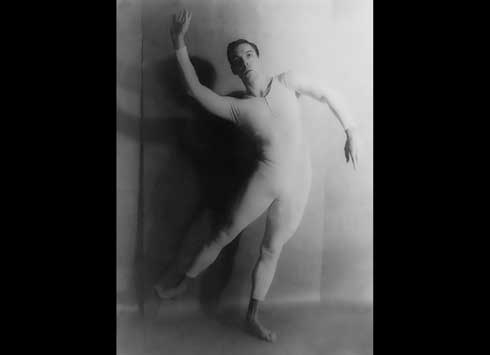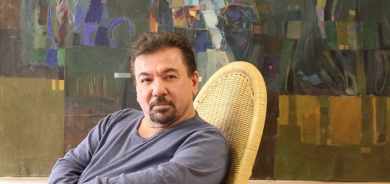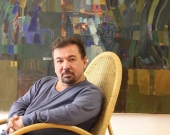Modern dance giant Paul Taylor dies at 88

Taylor, who died Wednesday, brought a radical new approach to the art form in the 1950s, creating a bridge between early modern masters like Martha Graham and Isadora Duncan and experimental contemporary dance.
He is one of the last giants of modern dance to pass away, after Graham, Merce Cunningham and Pina Bausch. His dance company was one of the first from the United States to tour around the world.
"Paul Taylor was one of the world's greatest dancemakers, and his passing deeply saddens not only those of us who worked with him, but also people all over the world whose spirits have been touched by his incomparable art," said Paul Taylor Dance Foundation artistic director Michael Novak.
"We are grateful for your love and support as we begin to carry on his legacy with the utmost fidelity and devotion," added Novak, a dance company member who Taylor picked earlier this year to serve as his successor.
In a particularly provocative 1957 concert of seven works, Taylor's "Duet" had him standing motionless while his partner reclined looking "calm in an exciting way" before the curtain closed.
Most of the audience left, Graham dubbed him a "naughty boy" and Dance Observer published a review featuring four square inches (26 square centimeters) of blank paper.
That daring, convention-breaking spirit paved the way for the postmodern dance greats who emerged out of the Judson Dance Theater in the early 1960s like Trisha Brown, Steve Paxton and Yvonne Rainer.
Taylor collaborated closely with artists both avant-garde and established, including multiple pieces with designs by Robert Rauschenberg, others with music composed by John Cage and a decades-long collaboration with painter Alex Katz.
Through it all, Taylor kept a sense of humor, with a twinkle in his eye.
Among his roster of illustrious company designers was one named George Tacit.
It was only recently that Taylor admitted -- somewhat tacitly -- that he was in fact Tacit, having shied from making it known that he had designed costumes for a company that already bears his name.
- 'Great storyteller' -
Born in Pittsburgh, Pennsylvania on July 29, 1930 in the wake of the Great Depression, Taylor grew up in the US capital and surrounding region.
While attending Syracuse University on a swimming scholarship, he discovered dance in books he read at the library and transferred to the Juilliard School in New York.
He assembled a small group of dancers in 1954, performing himself until focusing more exclusively on choreography 20 years later.
Taylor, who danced in his early years for Graham, Cunningham and George Balanchine -- considered the father of American ballet -- brought technical prowess and physicality to the art form, often coupled with chirpy, colorful movements, scores and costumes.
He gained national and international renown with pieces like "Aureole" (1962), initially intended to upset modern dance purists but ultimately celebrated by modern ballet companies with its accessible, upbeat Handel score and lightly swaying costumes.
Showing his versatility, a year later he created the bleak "Scudorama," where eight dancers shrouded beneath multicolored beach towels crawl across the floor -- set to a score that Taylor commissioned asking that it have the same tempo as Igor Stravinsky's "Rite of Spring."
In 1980, Taylor created a riotous work with a two-piano arrangement of the "Rite" score, the storyline featuring gangsters and a kidnapping.
"He was a great storyteller through his dance, and he was America's master modern choreographer," Bodyvox dance company co-artistic director Ashley Roland told AFP.
"He created a strong dance vernacular, especially through men, in pieces like 'Arden Court' and 'Cloven Kingdom.' He was a swimmer, and his arm movement drove his dance with power and grace."
Matthew Bourne, the British choreographer known for his all-male take on the Russian ballet classic "Swan Lake," mourned "a great loss," adding that Taylor's "influence and sense of pure joy in movement continue to be an inspiration to dancers worldwide."
- Prolific -
Taylor created more than 140 dances since 1954, performed by Paul Taylor Dance Company, its smaller ensemble Taylor 2 as well as other dance companies around the world.
Since 2014, his dance company has called Lincoln Center -- the performing arts hall in the heart of New York City -- its second home for a three-week season each year. It's a rare honor for a modern dance troupe.
Paul Taylor American Modern Dance, as the initiative is known, presents both works from Taylor's own repertoire as well as new pieces by leading contemporary choreographers.
AFP















